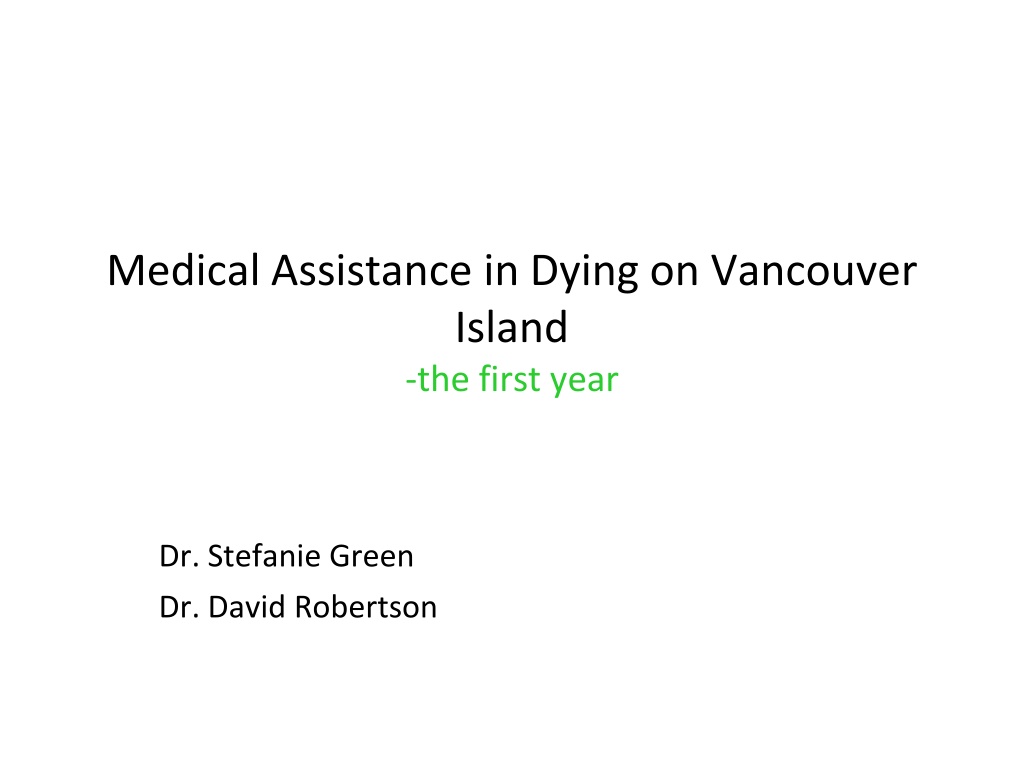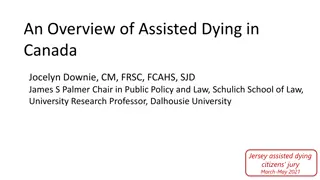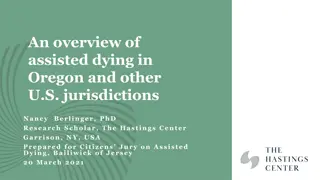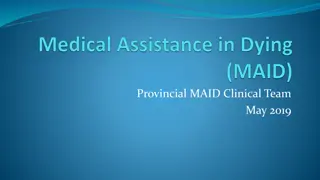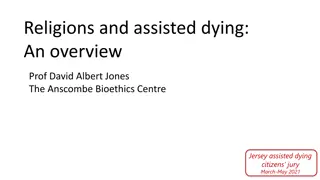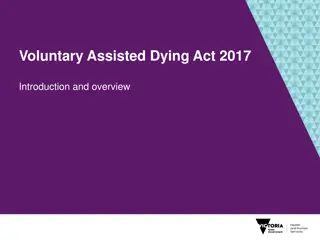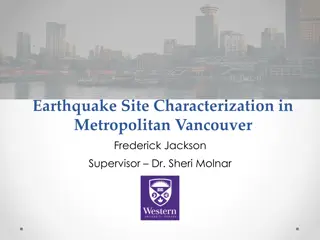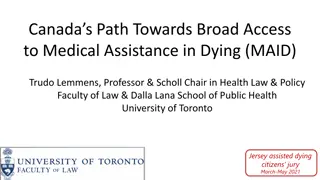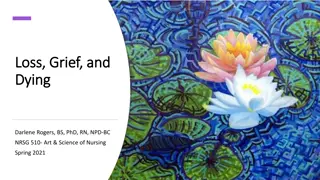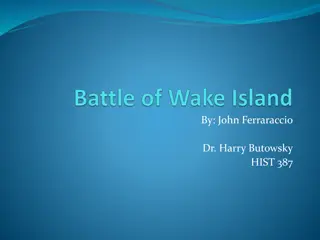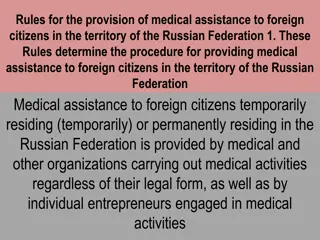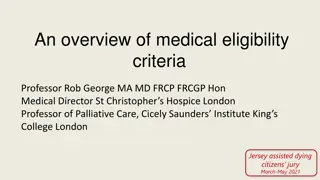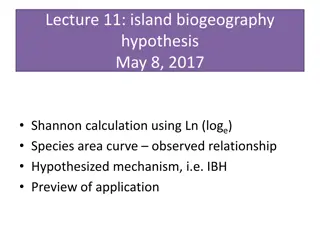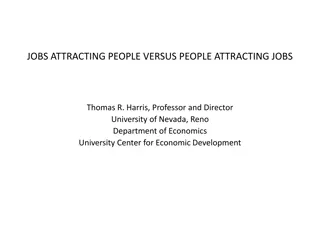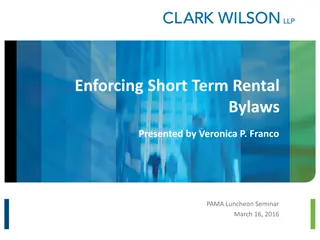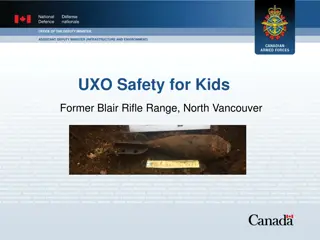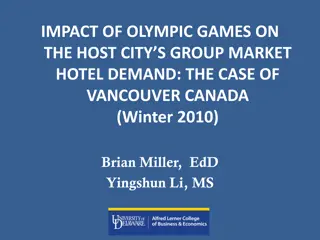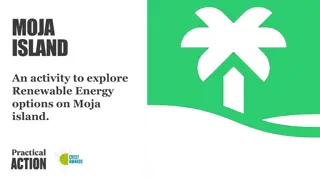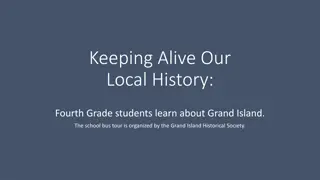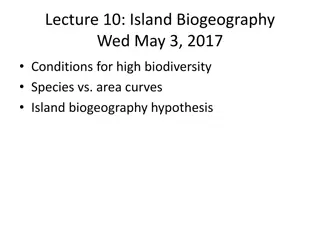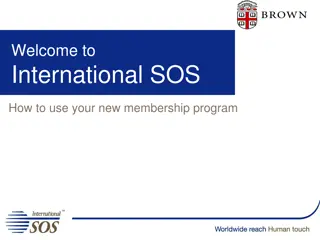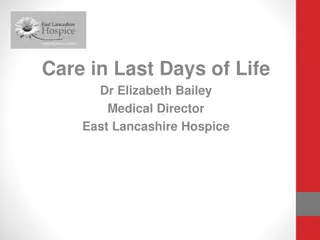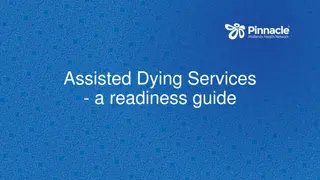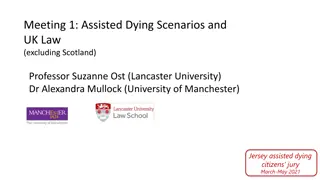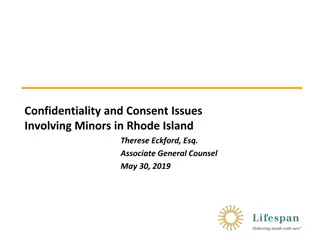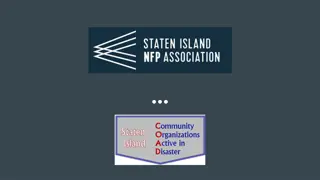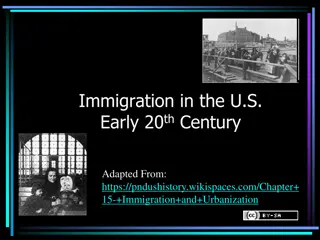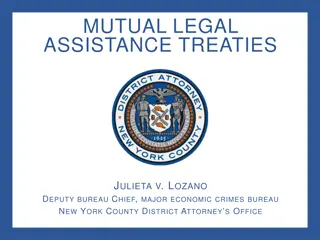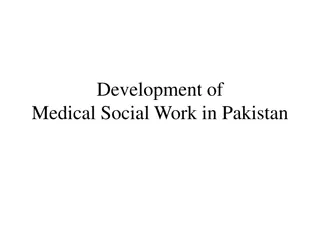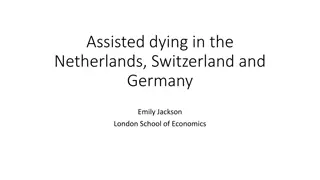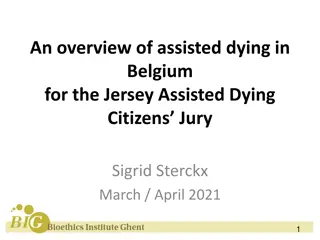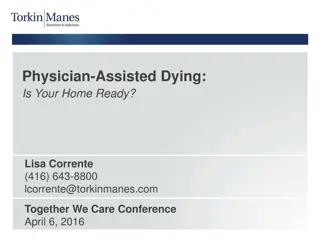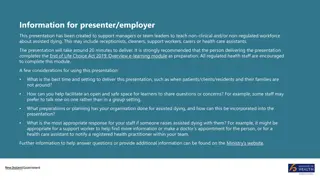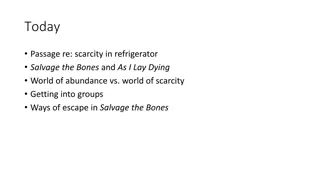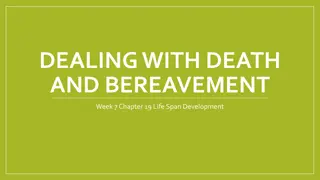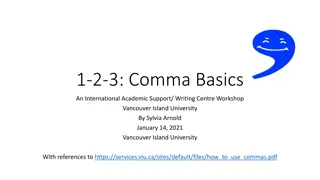Medical Assistance in Dying on Vancouver Island: A Comprehensive Overview
Dr. Stefanie Green and Dr. David Robertson are key figures in the provision of Medical Assistance in Dying (MAiD) on Vancouver Island, leading with expertise and involvement in relevant associations. Data sources include case reviews, provincial reports, and analysis of MAiD deaths, highlighting Vancouver Island's higher per capita rate. The report sheds light on the first year of MAiD implementation and the challenges encountered.
Download Presentation

Please find below an Image/Link to download the presentation.
The content on the website is provided AS IS for your information and personal use only. It may not be sold, licensed, or shared on other websites without obtaining consent from the author. Download presentation by click this link. If you encounter any issues during the download, it is possible that the publisher has removed the file from their server.
E N D
Presentation Transcript
Medical Assistance in Dying on Vancouver Island -the first year Dr. Stefanie Green Dr. David Robertson
Previous life: Family physician DR. STEFANIE GREEN Maternity doctor Current Life: MAiD provider+ Relevant associations: University of British Columbia/University of Victoria (clinical faculty) Co-founder, Director and President Canadian Association of MAiD Assessors and Providers (CAMAP) www.CamapCanada.ca
Previous life: Anesthesthiologist DR. DAVID ROBERTSON Current Life: Executive Medical Director VIHA Executive Lead on MAiD Relevant associations: University of British Columbia/University of Victoria (clinical faculty)
Sources of Data 1. Case Review- All records from each MAiD death on Vancouver Island have been submitted to the Vancouver Island Health Authority (VIHA) working group on MAiD for review. All information is entered into the Island Health RedCap database. We analyzed the data for demographics, trends, and also for signs of gaps in data collection and service availability. 2. Interim update on Medical Assistance in Dying in Canada, June 17-December 21, 2016 https://www.canada.ca/en/health-canada/services/publications/health- system-services/medical-assistance-dying-interim-report-dec-2016.html 3. BC Coroner s Report 4. Calculations by Dr. J. Reggler/Dr S. Green based on provincial populations and annual death rates (Statistics Canada) 5. CAMAP members across the country
BC Data January 1, 2016 - June 30, 2017 Fraser Health 64 Interior Health 78 Island Health 210 Northern Health 15 Vancouver Coastal 132 Total MAID Deaths 499 (approx 1.4% of all deaths) *Eight of these deaths were reported prior to June 17, 2016.
Vancouver Island As of June 30, 2017 there have been 210 MAID deaths This is approximately 3% of all deaths THIS IS THE HIGHEST NUMBER OF MAID DEATHS, PER CAPITA, IN THE COUNTRY
Vancouver Island MAiD -the first year
MAID Deaths per Month 30 24 18 12 6 0 1 2 3 4 5 6 7 8 9 10 11 12
Gender Slightly more males than females
Age Average age was 76 years ranging from 39 to 105
14% of all cases employed telehealth services during assessment
Days from Request to MAID # MAID 100 80 60 # MAID 40 20 0 0--9 20--29 40--49 60--69 80--89 100-149
25% of all cases were expedited to less than 10 days
Underlying diagnosis Cancer Organ Failure Neuromuscular Frailty
% MAID at Home 125 100 75 50 25 0 1 2 3 4 5 6 7 8 9 10 11 12
Location of MAID 150 120 90 60 30 0 Home Hospital Hospice Residential care
Prescribers and Assessors Cumulative total 200 160 120 Prescribers Assessors 80 40 0 1 2 3 4 5 6 7 8 9 10 11 12
With the data we have it is not (yet) possible for us to reliably report on: 1.the number of patients who made initial inquiries 2.the number who made formal requests and did not meet criteria
Conclusions 1. MAiD deaths on Vancouver Island account for 3% of all deaths. Median age is 76, vast majority are by iv route and gender equality is apparent. As expected, most common underlying illness is malignancy. Out of ordinary for Canada, on VI most are in home. 2. Access to MAiD is restricted by the geographic proximity of prescribers. The ongoing struggle to increase the number of prescribers is a real obstacle to access to MAID. There may be several factor involved (legal fears, financial disincentives, admin load, ?emotional toll). Faith-based institutions have declined to allow MAiD on the premises necessitating patient transfers but hospice in Victoria is allowing MAiD on the premises for those already
